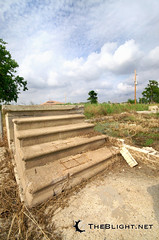NOLA
I've spent a fair bit of time in New Orleans. I lived in the city for one glorious, liver-damaging summer. My post-college job was 100 miles north, and I made sure to spend as much time down in the city as I could. I spent most of my time in the French Quarter-to-Uptown crescent of the city, the oldest part of New Orleans and the closest to the Mississippi river. This is, of course, the part where all the tourist highlights are, but it also incorporates plenty of local neighborhoods and authentic New Orleans character.
I tried to get out and see the rest of the city, as well. Driving the streets, taking random turns, seeing the areas I never had reason to visit. There are few cities as easy to get lost in as New Orleans; the streets have no 90-degree angles or grid pattern. When I lived here, I had experiences of trying to simply go around a block and ending up in the city's suburbs before I could re-orient myself. This is maddening when you are trying to find something in particular, but a quite agreeable trait when you want to soak up the city.
Before Monday, however, I'm fairly certain I'd never wandered into the Lower Ninth Ward of New Orleans. The area gained national infamy during the Katrina coverage as one of the hardest-hit areas after the levee breaks.
Before heading to the Ninth Ward, I'd gotten a feel for just how raw the Katrina damage, how much the devastation must continue to affect daily life for so many people. On the train ride in, driving around town, I saw the rows of houses boarded up, gutted, abandoned. I saw residential blocks with rows of FEMA trailers in every front yard.
Much of my old New Orleans is up and running. The old and relatively high-lying areas around the river - the French Quarter, Downtown, the Garden District, Uptown, Magazine Street - look much as they did before the storm. The Superdome and Convention Center leave no clue of the horrible days the displaced endured there. There are signs of the storm - every other building on Canal Street remains boarded up, as do many elsewhere. A tourist in town for a few days, especially one in town for the first time, could leave with the impression New Orleans has put Katrina behind.
In a way, it's a shame so much of the damage occured so far from the New Orleans the rest of the country knows. The tragedy New Orleans endured and is enduring, has, I think, faded from the national consciousness. Outside, Katrina was a tragedy, was a horrible thing.
Inside New Orleans, you can tell, it still is.
 The archived ramblings of my time as a world traveler up to my current life in Washington, D.C.
The archived ramblings of my time as a world traveler up to my current life in Washington, D.C.

1 comment:
It just breaks my heart. It is such a connundrum, take the poverty out of New Orleans and revitalize and what to you have? Not NOLA.
Post a Comment